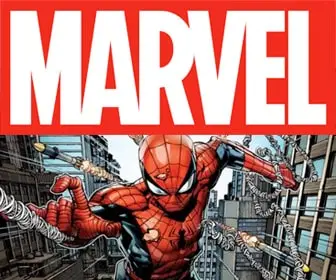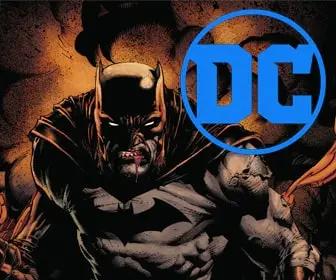
The Influence of Comic Book Cover Art: Iconic Designs and Artists
Comic book cover art plays a crucial role in the world of comics, serving as a powerful tool to engage readers and draw them into the captivating narratives that lie within. The importance of comic book cover art cannot be understated, as it acts as the first point of contact between the reader and the story. A well-designed and visually striking cover has the ability to pique curiosity, generate excitement, and convey the essence of the comic’s content. It sets the tone for the entire reading experience, offering a glimpse into the world and characters that await inside the pages. The cover art serves as a gateway, enticing readers to pick up the comic, explore its contents, and embark on a thrilling journey of imagination and storytelling.

Beyond its role in attracting readers, comic book cover art also acts as a marketing tool, promoting the comic book to potential buyers and collectors. A compelling cover can make a significant impact on sales, drawing attention on store shelves or in online marketplaces. Iconic cover designs have the potential to become symbols of the comic book industry and popular culture, transcending the pages of the comic itself. They become recognizable images that embody the essence of beloved characters, memorable storylines, or significant moments in comic book history. The cover art becomes an essential part of the comic book’s identity, contributing to its overall appeal and making it a desirable collectible for fans and enthusiasts.

The power of iconic designs in comic book covers lies in their ability to capture the essence of a story, character, or moment in a single image. These designs have the remarkable capability to resonate with readers and leave a lasting impression. Iconic covers become visual representations of beloved characters and memorable storylines, instantly recognizable and deeply ingrained in popular culture. They have the power to evoke emotions, whether it’s awe, excitement, or intrigue, and draw readers into the comic’s world.
An iconic design goes beyond mere aesthetics; it communicates the essence of the comic book’s content and serves as a visual hook that entices readers to explore further. From dramatic confrontations between superheroes and villains to symbolic representations of a character’s powers or the tone of a story, iconic designs encapsulate the core elements that make a comic book special. They convey a sense of excitement and anticipation, urging readers to delve into the pages and discover the thrilling narratives that lie within. These designs have the power to transcend the confines of the comic book medium, becoming cultural touchstones and symbols of the enduring impact of storytelling through visual art.

- Action Comics #1: This cover, published in 1938, features the debut of Superman, created by Jerry Siegel and Joe Shuster. It showcases Superman lifting a car above his head, symbolizing his superhuman strength and introducing the world to the first-ever superhero.
- The Amazing Spider-Man #129: Published in 1974, this cover marks the first appearance of The Punisher, created by Gerry Conway, Ross Andru, and John Romita Sr. The cover depicts Spider-Man swinging through the city with The Punisher aiming a gun, capturing the tension between the two characters.
- Detective Comics #27: This cover, released in 1939, showcases the first appearance of Batman, created by Bob Kane and Bill Finger. The iconic image features Batman swinging across the night sky with a Gotham City backdrop, introducing the world to the Dark Knight.
- The Incredible Hulk #181: Published in 1974, this cover features the first full appearance of Wolverine, created by Len Wein and Herb Trimpe. The cover depicts Wolverine lunging at the Hulk, foreshadowing the fierce and enduring rivalry between the two characters.
- The Uncanny X-Men #141: Released in 1981, this cover, known as “Days of Future Past,” displays a dystopian future where the mutant-hunting Sentinels dominate. The cover art by John Byrne and Terry Austin perfectly captures the dark and foreboding atmosphere of the storyline.

Celebrated cover artists have left an indelible mark on the comic book industry with their exceptional talents and distinctive styles. These artists have contributed to the visual identity of comic books, creating iconic and memorable cover art that has become synonymous with beloved characters and storylines. Their artistic prowess and ability to capture the essence of a comic book in a single image have made them highly regarded and celebrated within the industry.
One such celebrated cover artist is Alex Ross, known for his breathtaking realism and attention to detail. His paintings have graced the covers of numerous comic books, bringing superheroes and their worlds to life with a sense of awe and grandeur. Ross’ meticulous approach to portraying characters in a lifelike manner has garnered him widespread acclaim and a dedicated fanbase.

Another celebrated cover artist is Jim Lee, renowned for his dynamic and iconic superhero imagery. His work on covers has been instrumental in shaping the visual landscape of characters like Batman, Superman, and the X-Men. Lee’s ability to capture the energy and power of these characters through bold linework and striking compositions has made him a fan favorite and a highly sought-after artist.
Adam Hughes is widely recognized for his stunning artwork and his ability to capture the beauty and grace of female characters. Hughes’ covers often feature intricate linework, vibrant colors, and a keen attention to detail. His mastery of anatomy and facial expressions brings his characters to life, making them captivating and visually striking. Hughes has worked on various comic book series, including Wonder Woman, Catwoman, and Power Girl, leaving an indelible mark with his exceptional cover art.
Greg Horn is another celebrated cover artist known for his dynamic and eye-catching illustrations. Horn’s covers often feature bold and energetic compositions that command attention. His unique style combines realistic renderings with bold graphic elements, resulting in visually stunning covers. Horn has worked on a wide range of comic book titles, including Spider-Man, She-Hulk, and Black Widow, infusing each cover with his signature style and leaving a lasting impression.
Jack Kirby, often referred to as the “King of Comics,” is known for his dynamic and visually striking cover art that has become legendary in the comic book industry. Some of Kirby’s most memorable covers include his work on titles like Fantastic Four, The Avengers, and The New Gods. His covers are characterized by their boldness, larger-than-life characters, and action-packed scenes that leap off the page. Kirby’s distinctive style, featuring powerful compositions, intense energy, and intricate detail, has left an indelible mark on the medium. His covers often convey a sense of epic scale, capturing the excitement and wonder of the stories they represent. Kirby’s iconic cover art continues to inspire and captivate readers, reminding us of his unparalleled contributions to the world of comic books.

Fiona Staples is another celebrated cover artist known for her unique and striking artwork. Her covers often feature vibrant colors, intricate details, and a sense of visual storytelling that instantly captures attention. Staples’ covers have a distinct style that sets them apart, and her ability to convey emotion and atmosphere through her art has garnered critical acclaim.
These celebrated cover artists, along with many others, have elevated cover art to new heights and contributed to the rich visual tapestry of the comic book medium. Their creativity, skill, and ability to capture the essence of characters and stories in a single image have made them influential figures in the industry. Through their remarkable talent, they have left a lasting impact on the art form and continue to inspire and captivate readers and fans around the world.
Comic book covers are not only a means of marketing and storytelling but also a unique form of art in their own right. These covers serve as visual representations of the comic’s content, encapsulating the essence of the story and its characters. Artists utilize various techniques, including illustrations, colors, typography, and design, to create captivating and impactful covers that grab the attention of readers.
One of the defining aspects of comic book cover art is its ability to convey emotion and narrative within a single image. Artists skillfully use composition, poses, facial expressions, and backgrounds to evoke a range of feelings, from excitement and suspense to joy and melancholy. Through their artistry, they bring characters to life and invite readers into the world of the comic book.

Comic book covers also provide artists with a platform for creative expression. They can experiment with different styles, art mediums, and visual storytelling techniques to convey the tone and themes of the comic. From traditional hand-drawn illustrations to digital artwork, cover artists employ their unique artistic styles and talents to create visually stunning and memorable images.
Moreover, comic book covers have gained recognition as collectible pieces of art. Many covers have become iconic, celebrated for their artistic merit and cultural significance. They are sought after by fans and collectors who appreciate the craftsmanship, creativity, and historical value of these unique pieces. Comic book cover art exhibitions and galleries have emerged, further solidifying the recognition of these covers as significant works of art.
Comic book covers represent a distinctive form of art that combines storytelling, marketing, and visual aesthetics. They possess the ability to captivate readers, convey narratives, and evoke emotions through the skillful use of composition, illustration, color, and design. As collectible and celebrated artworks, comic book covers have rightfully earned their place in the artistic landscape, showcasing the talent and creativity of cover artists while adding another layer of enjoyment and appreciation to the comic book medium.










